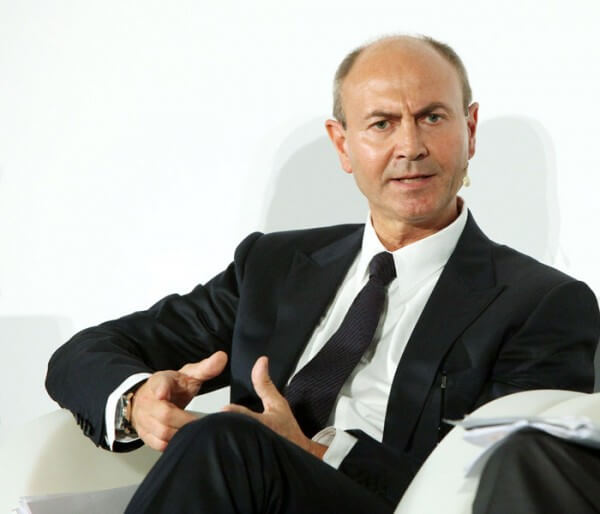“Counterfeiters have state-of-the-art production technology. They hire the best hackers and their distribution networks are some of the most inventive today, all of which trivialises counterfeiting to the point that consumers think buying counterfeit goods is normal, even cool. The only possible response, apart from brands’ combat in the field, is to educate customers, even from school age.” Carlos Moreira, Founder, Chairman and President of Wisekey, a Swiss company that develops bespoke digital security solutions, left no doubt about one of the fundamental problems of counterfeiting during a round table at the FT Business of Luxury Summit 2011, which was held June 5th to 7th in Lausanne.

Turning a blind eye
Virtually all luxury firms now face the growing pressure of counterfeiting, which has found an ideal medium in the internet. For a long time, however, these firms preferred to cast a veil over the subject rather than expose brand image to the negative impact of fakes. “Just a few years ago, counterfeiting wasn’t seen as a risk,” Gian Giacomo Ferraris, Chief Executive, Gianni Versace, observed. “We’d tell ourselves the people who bought fakes weren’t our customers anyway. Yet it soon became clear that brands and brand DNA were in danger of being corrupted by counterfeiting.” “Counterfeiters are stealing our identity,” Nathalie Moullé-Berteaux, Executive VP, Public & Legal Affairs at Lacoste, declared. “They are hijacking investments in innovation and creativity.” “And ultimately intrude in relations between the brand and its customer,” confirmed Theodore Max, partner at Sheppard Mullin, an intellectual property practice group.
The damage caused by fakes has increased over recent years as counterfeiters have acquired the means to imitate authentic products almost to perfection. “Not a week goes by without customers bringing in watches which they purchased in all good faith, and which turn out to be fakes,” confirmed René Beyer, CEO of Beyer Chronometrie, a family-run business in Zurich. “Some are so well-imitated that only the manufacturer of the original can spot they are fake. Given that counterfeiters now make three “Rolex,” to name a brand, out of one, how can we possibly distinguish between genuine and fake. We need to face the facts: we won’t put a stop to counterfeit production.”
Taking vertical integration beyond the production stage to also encompass distribution can be one response to this scourge. Technology is without doubt another. As Carlos Moreira explained, by giving each product a digital ID in the form of a smartcard with its own algorithmic code, problems of authentication are resolved as the card can be read at any point of sale and online. “Hublot has adopted this technology and gone on to launch its own social network, Hublotista, which has grown into a genuine community.”
A battle on all fronts
None of these solutions, however, will dissuade customers who wittingly buy fakes. Brands have therefore multiplied initiatives at ground level, often successfully. “In 2002, we tackled the intermediaries of this underground economy who had most to lose from legal action against them, particularly in the US,” Nathalie Moullé-Berteaux explained. “The courts ruled in our favour and we were able to continue talks with local authorities to conclude partnerships that are now giving results even in China. Legal pressure also recently led to a partnership with internet players such as eBay and Amazon. The only way to fight counterfeiting is to lead a battle on all fronts!”
When Gian Giacomo Ferraris took over the reins at Gianni Versace in 2009, counterfeiting wasn’t top of his agenda as the Italian fashion firm was in severe difficulty, forcing the new CEO to cut a quarter of its workforce. However, despite having his sights trained on a return to growth and profitability, Gian Giacomo Ferraris also had his eye on the counterfeit industry which in his words, speaking in June this year at the FT Business of Luxury Summit in Lausanne, “corrupts a brand, undermines its value creation, and can potentially destroy its business model.” His first response was to individually target known counterfeiters and their distributors, but “it soon became obvious this was costing far too much time and money, with mixed results.”

This prompted a change in strategy, now focused on prevention. Says Gian Giacomo Ferraris: “We started training staff in our own sales network and at our authorised distributors to make these points of sale centres of reference with regard to counterfeit goods. We also organised seminars with various Customs departments, worked on a national level with interest groups in our branch, and asked Italian embassies in the hardest-hit markets for their assistance. This set off a virtuous circle. Just one example: 360,000 counterfeit Versace products were seized in 2010, which is ten times more than in 2008 at a third of the cost.”
The company has made the internet its priority for 2011. Gian Giacomo Ferraris has set up a specialised unit, tasked with closing down counterfeit sites and eliminating them from search engines. “The next step will be to raise awareness among consumers and show them there can be no compromising on quality.”
















